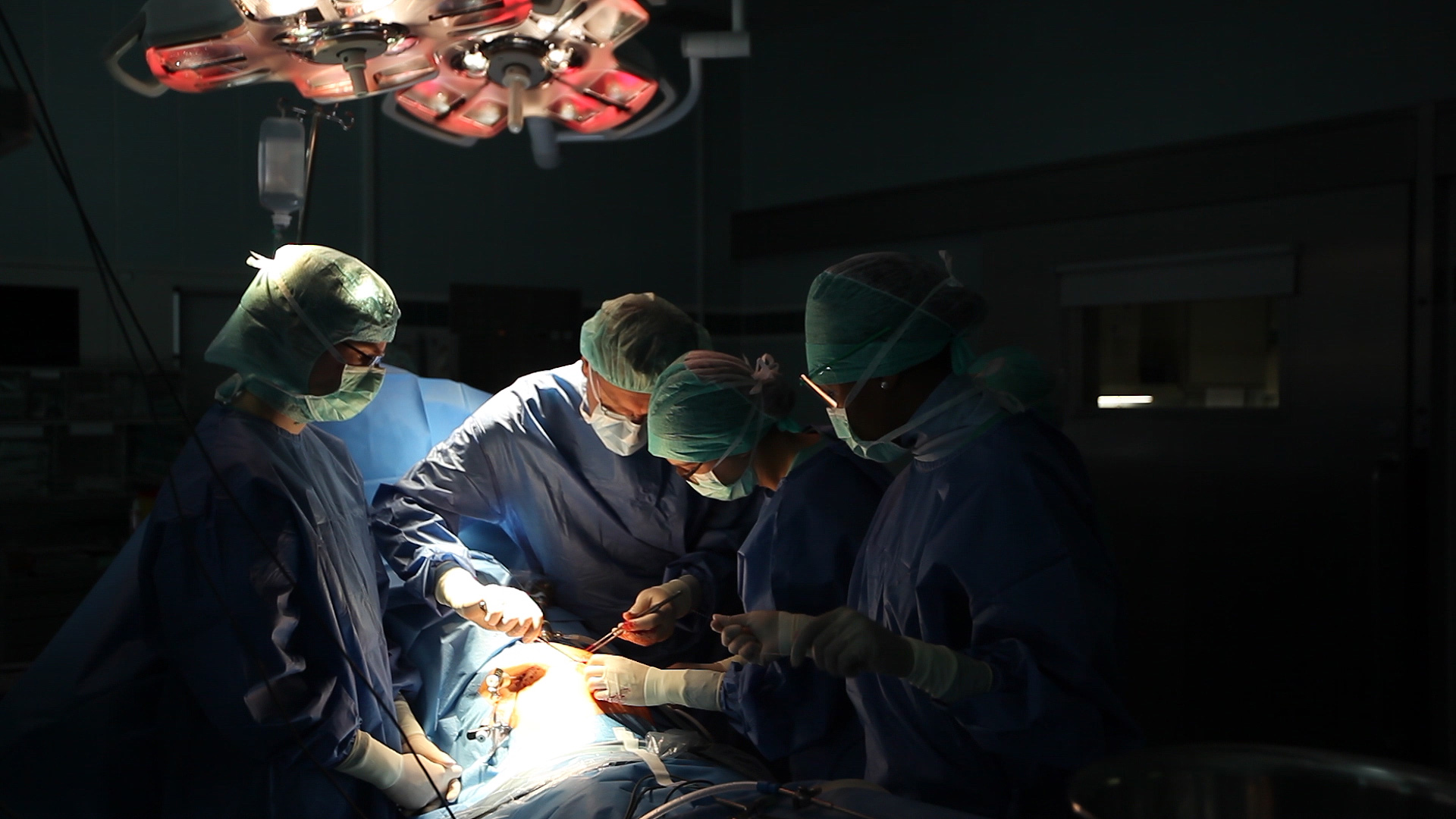Operating images

(still), two channel video, full HD and VGA, sound
(excerpt), two channel video, full HD and VGA, sound

(juxtaposed stills), two channel video, full HD and VGA, sound
Modern medicine was founded on a profoundly new understanding of physiology and pathology as observable bodily processes, tangible both to the eye and the hand of the attentive and skillful physician. After a long age of a rather philosophical understanding of the human body, medical research and practice were transformed by objective standards, which in turn were also subject to moderate, but distinct changes. However, the entanglement of vision and action remains firmly at the core of medical practice. Only recent technological developments were able to disturb this crucial connection, introducing proactive, subjective rather than objective imagery: Dubbed “image guidance”, these technologies demand and instruct immediate actions.
In order to see and reach into the body, one must first overcome its boundaries in a greater or lesser extent of immediacy. Laparoscopic surgery favours cameras and instruments over eyes and hands, implying that both are essentially the same regarding their interactive connection. One of the earliest and most pervasive example of image guidance, the laparoscopic approach yields many of the the implications, imperfections and interference factors emerging from this intricate concept of image-interactive patient care. When images constitute actions which in turn create new images, the body is at risk to be represented by an increasingly independent model, governed by semi-symbolical actions.